Presenting Andalucían Delights: A Trio of Fantástico Olive Oils—Exquisite Elixirs from Spain
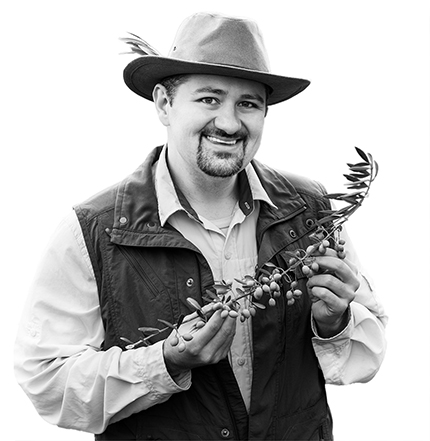
- These Club exclusives, available to no one else, are the finest artisanal oils of the Iberian harvest.
- Redolent with vibrant, herbaceous aromas and palate-pleasing tastes to match, these early harvest oils are from award-winning farms and custom blended for you by your Olive Oil Hunter.
- Independently lab certified to be 100 percent extra virgin, they’ve been rushed to our shores by jet at their peak of flavor and to preserve their zesty polyphenols.
Against all odds. That’s what this year’s hunt for superb Spanish extra virgin olive oil felt like. With every olive pressing there’s an air of mystery, anticipation, and even drama. But this year, as I landed in this beautiful country, I felt as though I was walking into a new season of True Detective, rife with intrigue. Olive oil is the heart and soul of Spanish culture and cuisine, and some people will stop at nothing to get their hands on it.
News reports of olive production being cut in half (or worse) because of the continuing drought in Spain were overtaken by front-page stories about the criminal consequences of the shortage: Thieves—ladrones—not only ripped 100-year-old olive trees out by their roots (when they weren’t content with sawing off olive-laden branches) but also stole tens of thousands of liters of oil from tanks in mills (easier, because all the work had been done for them). Some unscrupulous characters passed off seed oil, artificially colored to look more like EVOO. Others supplemented ordinary olive oil with inferior-quality lampante, so named because it was once used to light oil lamps. As an olive oil aficionado, you, my dear Club member, can tell the difference, but people who don’t yet appreciate the unique aroma and taste of ultra-premium, fresh-pressed olive oil may easily fall victim to these scams.
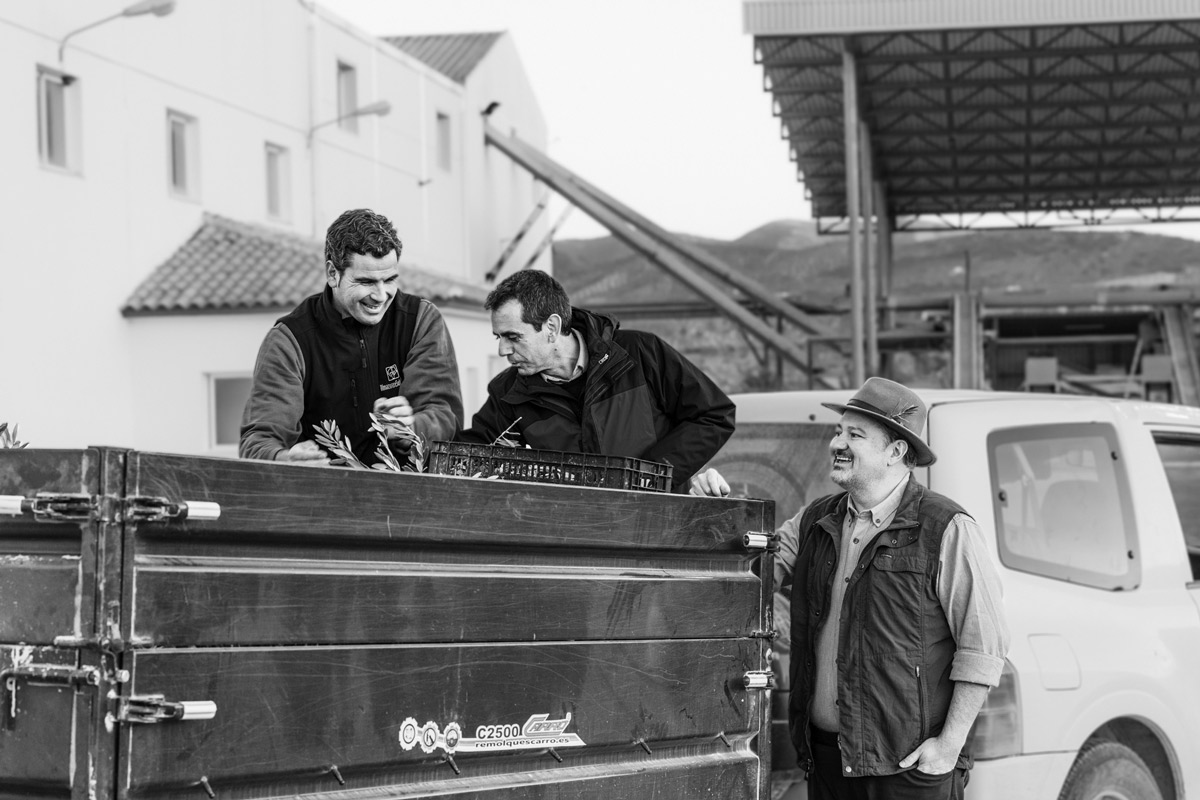
Rest assured that you have in your hands the proverbial cream of the crop—three magnificent olive oils, delivered to your door thanks to the combined efforts of my Merry Band of Tasters and me and our outstanding Spanish producers. Despite the crisis they are living through, with even mediocre oils selling for triple the price of just three years ago, the three masters we worked with on this curated collection came through for us. Indeed, I’ve known two of them for nearly 20 years—since I created the Club, in 2005—and they don’t want to disappoint you any more than I do.
Here Comes the (Burning Hot) Sun
Top artisanal farms almost always use the latest irrigation techniques to compensate for drought conditions and take extraordinary measures to quickly transport just-picked olives from the grove to the mill, keeping them cool at every stage of the process. This preserves their aromas, taste, and healthful polyphenols. But a weather catastrophe happened relatively early in the growing cycle this season—and for many producers, there was no coming back.
When I toured the Finca Gálvez mill with my dear friend Jose Gálvez, he explained that early rains had spurred the growth of fantastic olive blossoms. “Everyone anticipated a great crop, but then at the start of spring we experienced temperatures you would expect to have in early summer. That hot sun burned 70 percent of the blossoms, and they fell off the trees,” he said, adding that Jaén, the Andalucían province where Finca Gálvez is located, experienced the worst of it. “Even though we had relatively normal weather after that, we cannot create new blossoms—we knew that the harvest was going to be only a third of normal.”
In an attempt to satisfy orders, we heard that many commercial mills in Spain opted for heat extraction to get more oil from the fruit, a process that lowers quality because it essentially cooks the olive paste. They also set stratospheric prices for what they were able to produce, telling clients, “Here’s my floor price and I’ll wait for your offers,” just like at an auction—they were announcing a starting point for negotiation. This means that consumers buying EVOO in stores will be paying higher prices for lesser-quality oil.
A Topsy-Turvy Season
Under normal conditions, Andalucía provides 30 to 50 percent of the world’s olive oil. In this upside-down year, rather than exporting its oil to Italy—which, to the surprise of many people, doesn’t produce enough to satisfy local demand—Spain had to buy oil from Italy. Consider, too, that only a third of Spain’s production is extra virgin—premium producers make up only a small niche, and this year, they represented barely a dot. There wasn’t going to be much ultra- premium olive oil to go around. But thanks to the mutual admiration that our partners and I have for each other, the longevity of our collaborations, and your appreciation of their liquid gold, they were ready, willing, and able to allocate their finest for you, dear Club members.

I love that all the trials and tribulations we go through have a silver lining. This quarter it was crafting our exceptional Castillo de Canena Arbequina, our Picual created from olives grown at various elevations at Finca Gálvez to give it a complex taste profile, and our magnificent García Torres Hojiblanco with a healthy addition of the rare Picudo—co-creator Luis Torres describes this season’s Picudo oil as the best he’s tasted in his 23-year career.
Why do certain olives produce a spicier oil from one year to another? It’s all thanks to Mother Nature. Francisco “Paco” Vañó of Canena shared this observation with me when we were able to compare impressions: “If someone promises you the same oil profile every year, don’t trust them—every year you’re going to be surprised by different flavors and aromas from the same olives grown by the same producers.” That kind of surprise is, in fact, a delight to true olive oil lovers.
Happy drizzling!

T. J. Robinson
The Olive Oil Hunter®
This Quarter’s First Selection
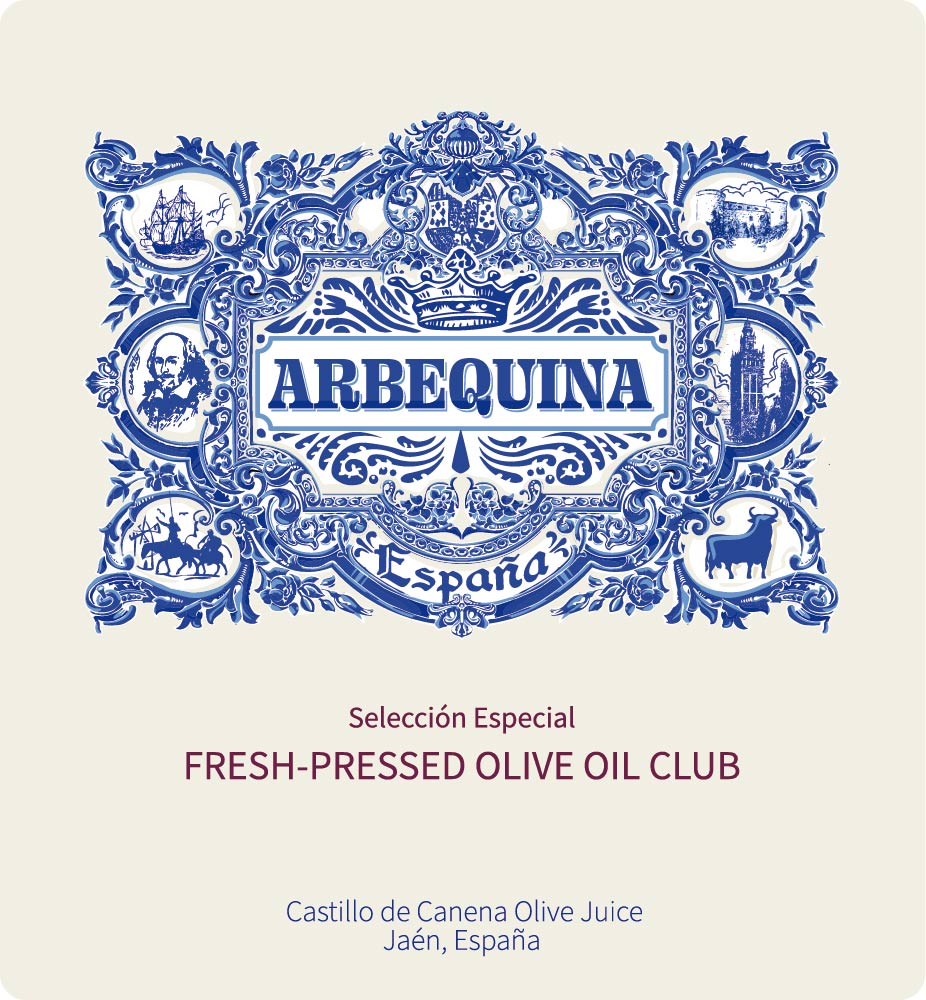
Over the years, I have amassed thousands of photos chronicling my many visits to the Iberian Peninsula in pursuit of the finest, freshest extra virgin olive oils. But my most treasured images—call them memories—are in my mind: the massive black metal bulls (originally erected along highways to promote Osborne brandy) that have become iconic symbols of Spain; the fabulous road food at gas stations, such as salty olive oil–roasted Marcona almonds and bocatas (sandwiches); or calçots, elongated green onions charred in ovens fueled with olive wood and served on clay tiles with garlicky romesco sauce.
But the views, my first from the balcony of the Renaissance-era castle known as Castillo de Canena, are among my favorite early memories of Spain. Gazing at the landscape below, I saw nothing but olive trees, draping the hills like sage green corduroy cloth. These storied trees, I thought to myself, are the glory, the very soul of Andalucía.
I first encountered Francisco “Paco” Vaño at the Fancy Food Show in New York City about 20 years ago. He and his sister, Rosa, had recently left high-profile corporate jobs to reimagine their family’s centuries-old olive oil business. (It was founded in 1780.) They dedicated themselves to producing ultra-premium olive oils, a rare and relatively under-appreciated commodity at that time. When we met, Paco had only two olive harvests under his belt, but I made sure I was on site for the third.
I’ve been going back to Castillo de Canena ever since. (The fifteenth-century castle mentioned above is actually the Vaño family’s home. It was declared a National Artistic Monument in 1931.)
When asked recently what he remembered about our first fortuitous meeting, Paco sheepishly revealed he was a bit skeptical when I explained my concept of a Fresh-Pressed Olive Oil Club to him. Though he admired my enthusiasm and passion, he admitted he had quiet doubts that Americans—most raised on the chemically refined oils labeled “light”—would accept the more robust aromas and flavors of premium extra virgin olive oils. “I’m so glad I was wrong!” he exclaimed. Me, too!
From the beginning, Paco and I had the same goal: to introduce discerning palates
to the joys of premium fresh-pressed extra virgin olive oils. He has been a magnificent collaborator and friend for the past two decades, delighting my Club members with exclusive olive oils and never failing to impress me with his monastic dedication to his craft.

He is one of the most knowledgeable and innovative olive oil producers in the world, constantly developing and/or employing clever strategies to improve his family’s award-winning oils. Though he’s not afraid to make bold changes—like the stunning stucco-and-metal state-of-the-art mill he built three years ago—it might be the smaller, incremental improvements he implements every year that make Castillo de Canena’s oils consistently extraordinary. During this harvest season, Paco added a fourth production line to expedite the handling of just-picked olives (multiple lines also mean opportunities for experimentation) and installed a water-cooled pipeline that transports the olive pulp from the crusher to the malaxer.
The fact that Paco and his team—principally, farm manager Álvaro Pulido Garrido and quality control supervisor Mariela Chova Martínez—were able to snatch victory from the jaws of defeat during this challenging harvest year was no surprise to me. Paco estimates that warm temperatures in early spring scorched approximately 80 percent of the flowers in his groves, with the Picual being hit harder than the Arbequina, which formed buds about a week earlier. To preemptively protect the nascent olives that survived, he supplemented the trees’ water ration with water purchased from local rice farmers. This was a first, he said. But it was a brilliant move, as this season’s Arbequina proves.
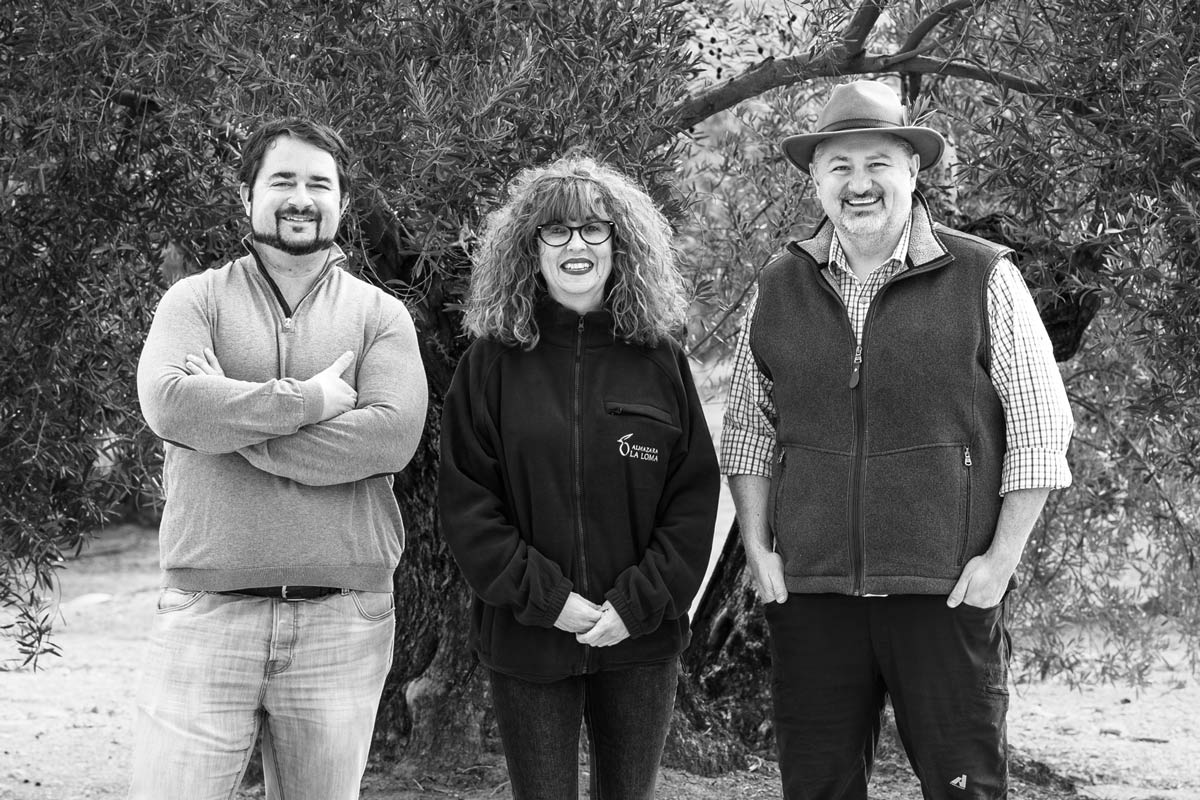
What I like to call “the magic window”—the opportune time to harvest the olives—was shockingly brief this year, Paco said. Olives, he reported, ripened at unprecedented and accelerated rates, going from green to yellow to black in days. Mariela relentlessly tracked the olives’ sensorial profiles, enabling Paco to direct his harvest team, laser-like, to fruit that was at its peak and eligible for Paco’s premium extra virgin olive oils. One of these—a Club exclusive—is now in your hands.
This Arbequina is not only exquisite but precious—a real Spanish gem. Paco asked me to convey to you how proud he and his family are to share their labor of love with discriminating olive oil lovers like yourselves.
Impressions and Recommended Food Pairings
This Arbequina leads with a fragrant bouquet of fresh fruit—on the nose you’ll appreciate apple, green banana, citrus, golden kiwi, and pear, along with rich aromas of almond and wild mint, vegetal notes of green grass and lettuce, and a pleasant hint of white pepper. On the palate, it’s very complex and balanced, with intense flavors of almond, grass, and herbs, the elegant bitterness of endive and escarole, and the lingering spiciness of white pepper.
Lavish it on salads with fruit and nuts, such as mixed green salad with citrus and sherry vinaigrette,* eggs, chicken, white fish, delicate pork and veal entrées, roasted carrots, ensalada de remolacha* and other sweet root vegetable dishes, spring green peas, sautéed mushrooms, vegetable paellas, soft-rind cheeses, vanilla ice cream, yogurt parfaits, chiffon cakes, and nut- or apple-based desserts.
*Denotes an original recipe featured in this report.
This Quarter’s Second Selection
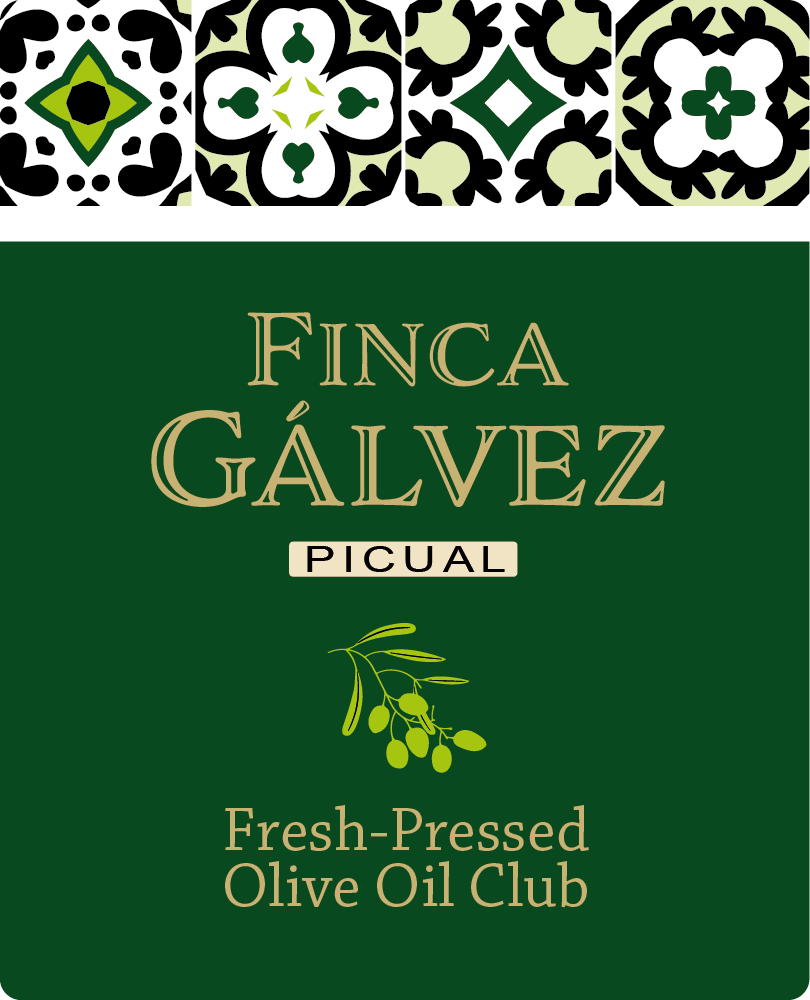
When I sat down with José Gálvez in the brand-new main building of Finca Gálvez, it was apparent that the family’s 2023 gold-medal wins at the NYIOOC World Olive Oil Competition—one for a Picual and another for a Frantoio—were squarely in the rearview mirror. Many honors have been bestowed on the Gálvez family since José’s father, Francisco, pivoted from the family’s masonry business to artisanal olive oil 25 years ago, but it’s not in their nature to sit back and polish trophies. They’re always looking ahead, setting new goals, and adding to their knowledge of the food world. Indeed, José had recently returned from Madrid Fusíon, an annual culinary symposium, brimming with ideas.
Considering all the countless awards that adorn the walls of their company offices, it’s hard to believe that the family felt any trepidation when they started out, but they knew they would be going head to head with olive mills run by fifth-generation millers. Olive cultivation has been part of the culture of Andalucía for millennia. The Gálvez family were the new kids on the block.
A few years in, José had the idea to distinguish Finca Gálvez from most other farms by crafting early-harvest olive oil from ultra-green fruit—something that almost no one was doing 25 years ago. After getting his diploma in business studies at the University of Jaén in 1999, José had immersed himself in the study of olive oil, first earning a certificate as a “technician in preparation of oils and juices” at the I. E. S. El Valle, then, over the following seven years, a masters in oliviculture and elaiotechnics and the title of expert in virgin olive oil tasting (he knows the learning never ends).
Yet patriarch Francisco wanted to proceed cautiously into this untapped area. “The first year we decided to craft ultra-premium oil, we made only 10 percent of our production in this early-harvest style, and it sold out,” José recounts, noting that I was one of his first buyers because I believed fervently in what he was doing. “So we allotted 25 percent the following year, and it sold out. My father had concerns, but once he saw that every drop was sold, he was fully on board.”
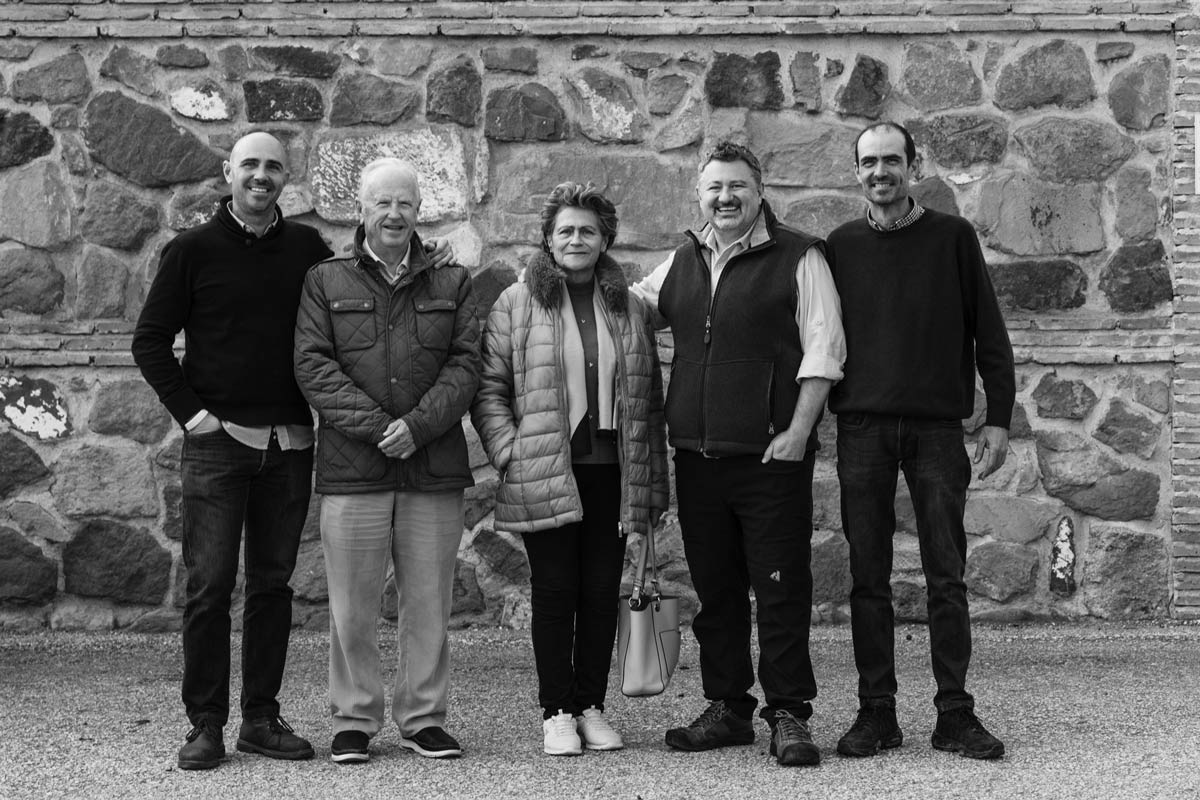
José’s mother, Felisa, who had cooked all her life with ordinary olive oils, was quickly won over by the early-harvest style, much like our Club members are when they first taste it—and there was no going back for her either. “When she’s running low in her kitchen, she’ll call one of us to ask for more!” says Andrés, José’s brother, who joined the business in 2009. Andrés’s first career was as an engineer—a great foundation for managing the workings of a modern olive mill.
Close as children yet with different personalities, Andrés and José remain enthusiastic about working together and view their shared responsibilities not as jobs but as their life. Though their roles are delineated, with José mostly involved in land management and Andrés mostly in production through packaging, they share the same vision, including respect for the environment. I always enjoy hearing Andrés’s perspective when we tour the groves.
José is meticulous about the care he gives his fruit, starting with pruning after every harvest, to get the most flavorful olives—even the best milling operation can’t compensate for inferior fruit, he explains. I love that they refuse to set quotas for the number of liters they will produce each season—they’re guided by the yield of the trees and the quality of that fruit.
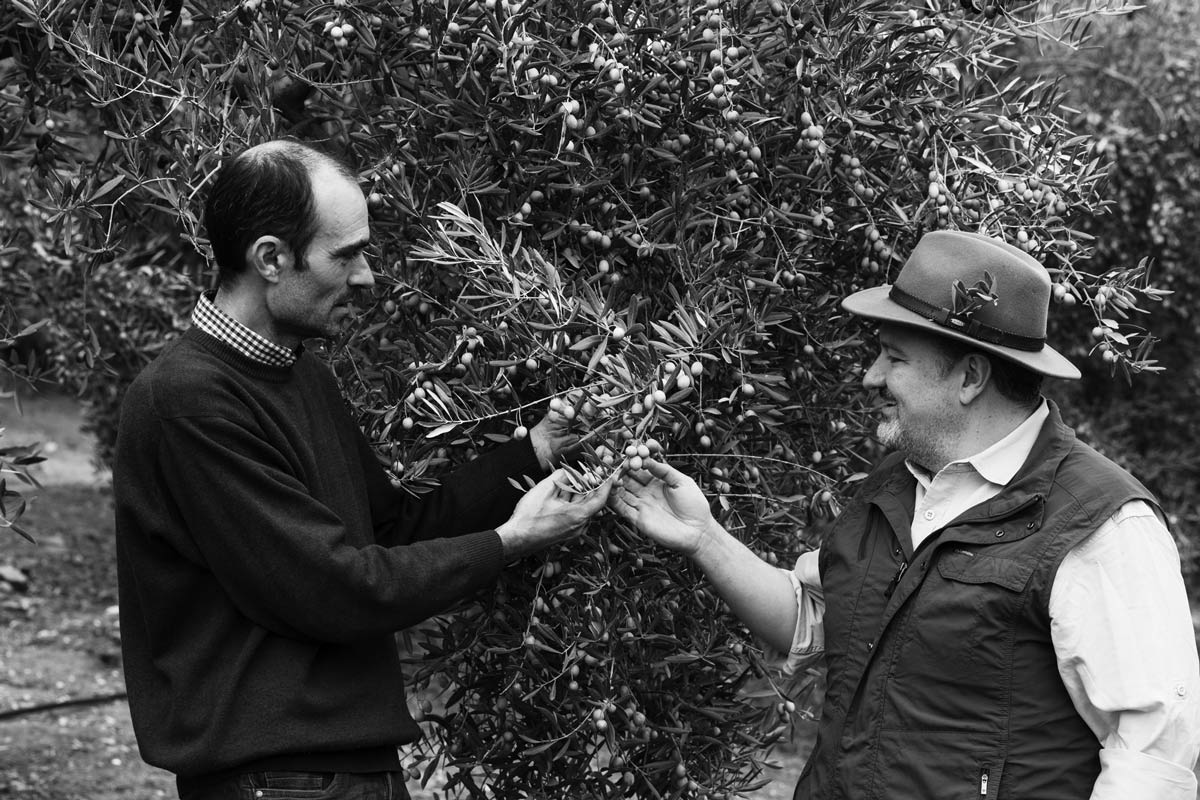
This year, our beloved Finca Gálvez Picual is once again our medium selection, yet it’s deliciously unique, a blend of two different batches of early-harvest Picual, both from the same orchard but planted at different elevations and harvested on separate days to create the complex style favored by Club members. We toasted another brillant collaboration over a wonderful meal at Restaurante Payber, with luscious meats, grilled vegetables, and an amazing array of shellfish—fabulous whole shrimp, razor clams, cockles, and a seafood soup. “We’ve been working together for a long time, we grew together, and it’s important to us that Club members are happy,” José told me. With this Picual, you will be!
Impressions and Recommended Food Pairings
The green and grassy aromas of this Picual enchant—inhale chopped culinary herbs such as thyme, oregano, and rosemary, bay leaf, Tuscan kale, baby spinach, and walnut with hints of green apple and kiwi. Taste the flavors of dark leafy greens like kale, along with tomato leaf, basil, micro-greens, wheatgrass, and parsley; the sweetness of pine nuts; bitterness of radicchio and baby arugula; and the spiciness of celery leaves and freshly ground black peppercorns.
It will enhance fried eggs, grilled steak, lamb merguez meatballs,* tuna, salmon, grilled octopus, caprese, tomato salads, salads with radicchio and spring greens, meat sauces for pasta, farro- and barley-based soups, gazpacho, pizza and focaccia, steamed artichokes, grilled vegetables, white beans and bean soups, herbal vinaigrettes, chocolate mousse, and almond orange cake.*
*Denotes an original recipe featured in this report.
This Quarter’s Third Selection
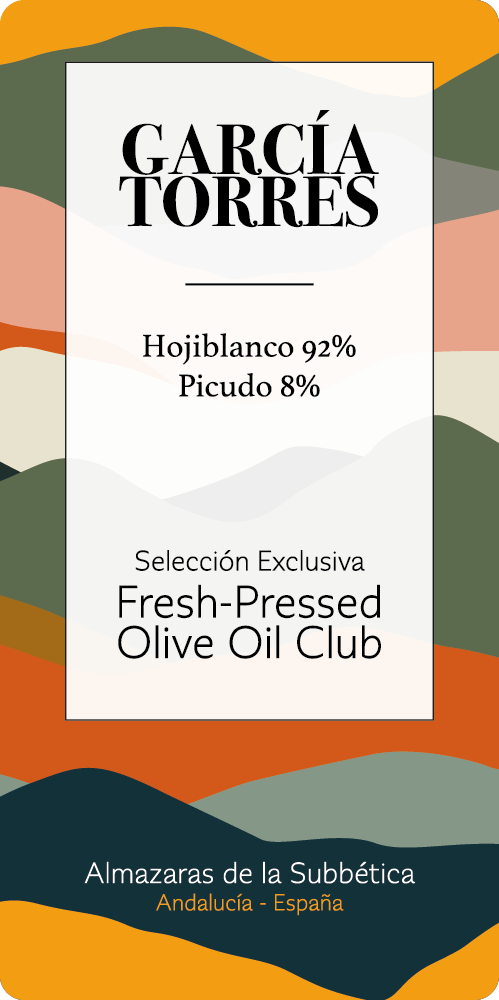
It’s wonderful to be back in this mystical, magical, almost primeval place, a national refuge for wildlife and ancient olive trees called the Subbéticas Natural Park. It’s a 73,000-acre mecca for rock climbers and spelunkers. But a leisurely walk here might find you dropping instinctively to the ground as Griffon vultures (six-foot wing spans, lest you laugh), peregrine falcons, or many species of migratory birds do overhead fly-bys.
More important to me and my Club members, this extraordinary region is home to one of Spain’s most well-respected olive oil cooperatives, Almazaras de la Subbética. Founded in 2007, this award-winning mill supervises the growth and harvest of many family olive groves in and around the Priego de Córdoba region in southeastern Spain.
Motivated by a tip from international olive oil expert Santiago Botas (see below), who assured me I was likely to encounter there fresh-pressed olive oils that matched my high standards, I first visited the area in 2009. I was enchanted by the municipality’s ancient churches, Moorish ruins, and charming rural towns and villages, their whitewashed outside walls festooned with colorful geraniums. It was in Priego that my Merry Band of Tasters and I met Luis Torres, then the general manager of the small, family-owned co-op Aroden.
Another thing that lured me to this incredible place was the prospect of finding the olive varietal Hojiblanca for my Club members. Its name means “white leaf.” There’s an interesting story behind Hojiblanca: A Spanish olive farmer named Cornelius lived in fear of decrees from Julius Caesar, whose Roman subjects had developed an insatiable appetite for olive oils from Andalucía. The latest imperial writ demanded that farmers increase their olive oil production. Cornelius owned a few olive trees, none too prolific. Then he remembered an olive tree cutting a traveling merchant had given him: Cornelius planted it on a hillside but did not have high hopes for its survival. Amazingly, it thrived. He harvested a few additional cuttings and planted them around the “parent” tree. And a Hojiblanca grove was born!
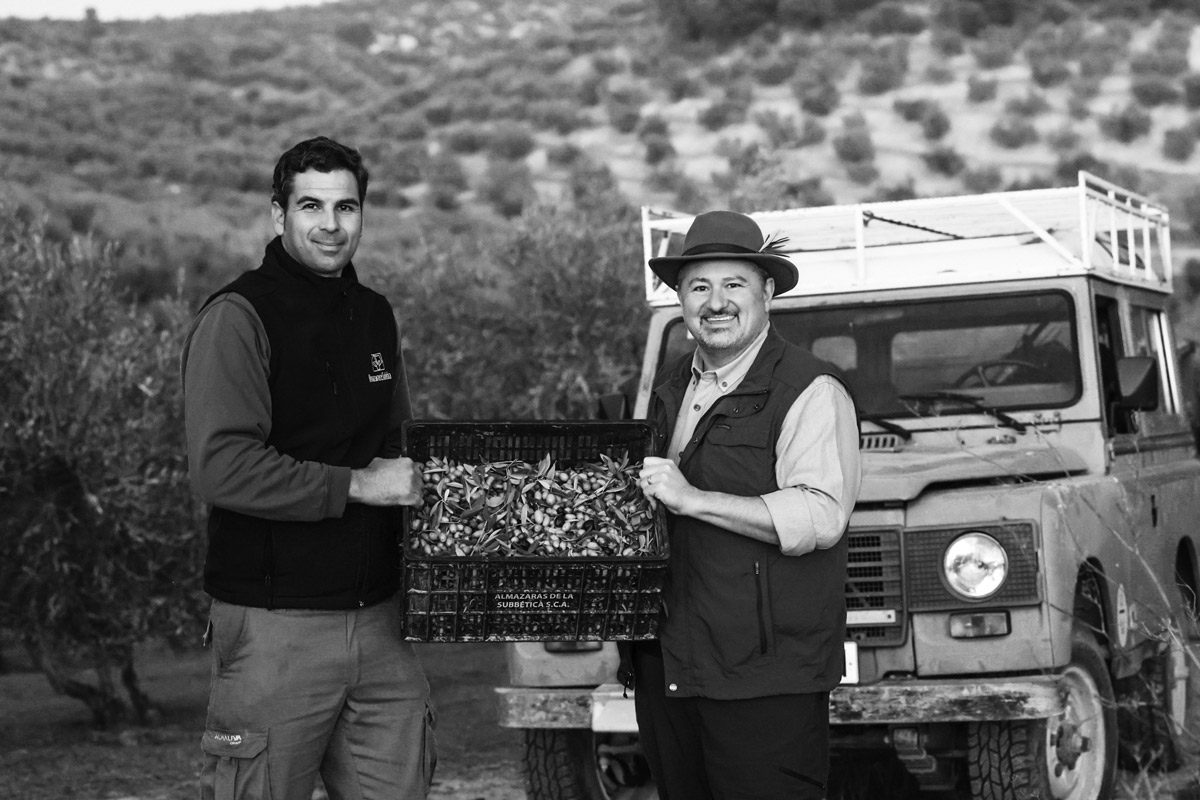
The affable Luis Torres joined Almazaras de la Subbética after Aroden changed hands. I was thrilled for him, as the Carcabuey-based co-op is also near his family home in Priego. I didn’t want to lose track of Luis, as it often takes years to develop the mutual understanding that allows for inspired collaborations on extraordinary oils for our Club. Luis “gets” me. We’ve known each other for more than a decade. He is one of the most disciplined and talented olive oil tasters I know, often quaffing 20 olive oil samples before most of us have enjoyed our first sip of morning coffee.
Because Almazaras de la Subbética is a larger entity, Luis has more olive oil–educated palates he can trust to back up his decisions, most notably manager Carlos García. Aided by Luis, Carlos is the supremely capable, hands-on conductor of the olive harvest, deftly orchestrating the season’s symphony of olive fruit. It’s been a privilege to work with this duo.
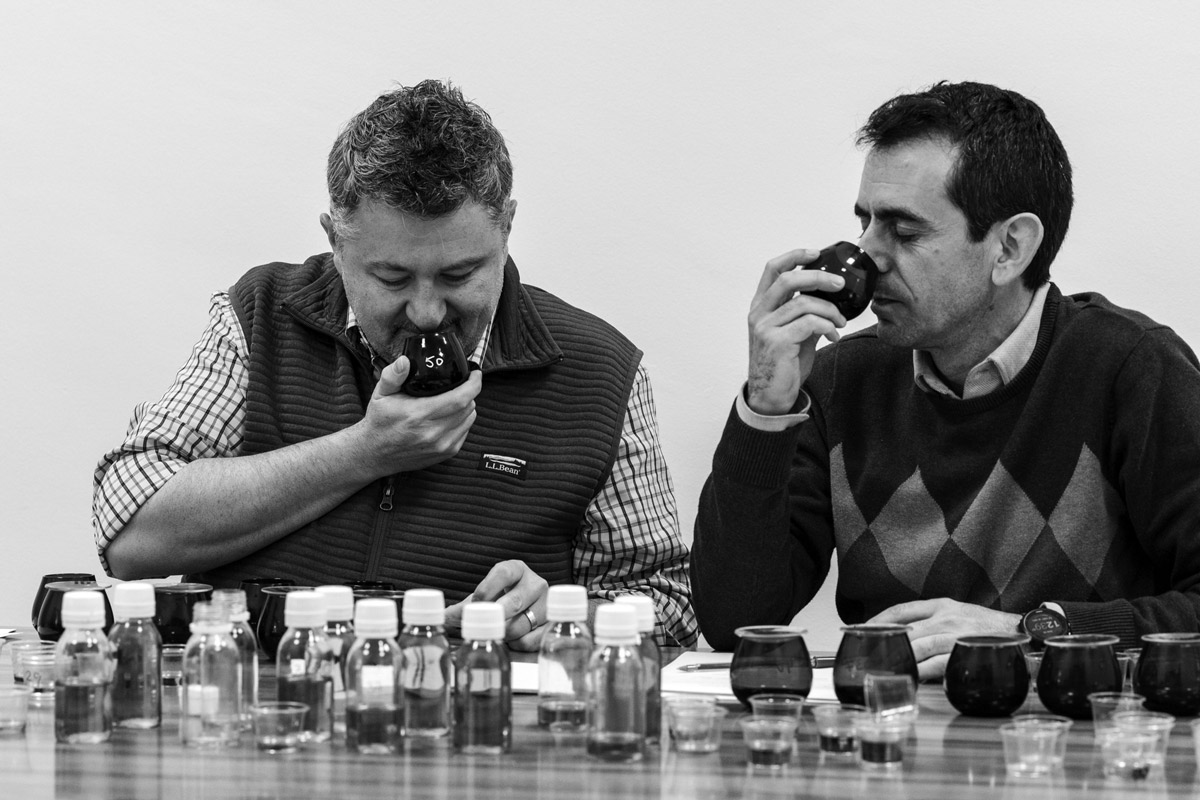
The harvest window was incredibly short this year, requiring the entire crew to work long hours. But everyone has to eat, right? Luis took my team and me to a restaurant we’d enjoyed before—La Pianola. Their baby clams are so succulent. Of course, we always bring our own bottles of olive oil!
Although it comprises only eight percent of this blend, the Picudo varietal plays an important supporting role in the fresh-pressed olive oil I’ve just sent you. Like Hojiblanca, Picudo can be used as a table olive. (Luis still laments that his grandmother’s recipe for cured Picudos has been lost…) It fine-tunes the Hojiblanco, polishing any rough edges. I love it. My Merry Band of Tasters and I tried the blend with varying percentages of Picudo and settled on this ratio.
This Club exclusive is magnificent, a fantastic reason to throw a tasting party. Check out our guide below.
Impressions and Recommended Food Pairings
On the nose, this blend of Hojiblanco and Picudo sings with grassy and herbal notes of basil, parsley, peppermint, and tomato leaf, which give way to hints of raw carrot tops, celery, rhubarb, Belgian endive, wheatgrass, fennel, and honeydew. On the palate you’ll taste hints of nasturtium and rose, along with green tomato, baby spinach, celery, Asian pear, and the nuttiness of hazelnut, the pleasing bitterness of arugula, and spiciness of a peppercorn mélange.
Enjoy it in asparagus frittata,* pork, lamb, game, cured Spanish meats, salmon, swordfish, grilled calamari, shrimp and other shellfish, zarzuela de mariscos y pescado* and other seafood soups, roasted or baked potatoes, beans, lentils and other pulses, tomato-based dishes like pan con tomate, crusty bread, aged and fresh goat cheeses, hard cheeses like Manchego, vanilla custard, and chocolate desserts.
*Denotes an original recipe featured in this report.
Olive Oil and Health
Reference: Flynn MM, Tierney A, Itsiopoulos C. Is extra virgin olive oil the critical ingredient driving the health benefits of a Mediterranean diet? Nutrients. 2023;15:2915.
A recent scientific review, published in the journal Nutrients, provides strong evidence that the phenols in EVOO—which are not present in lower grades of olive oil—play a primary role in the heart-health benefits associated with olive oil and the Mediterranean diet.
Phenols are bioactive compounds in plant-based foods. EVOO is rich in phenols, whereas refined olive oils are stripped of these health-promoting compounds by chemical production processes.
Study Objectives
Dr. Mary Flynn, PhD, registered dietician, and associate professor of medicine at Brown University, identified 34 randomized, controlled trials published between 2000 and 2022 that evaluated the effects of EVOO on risk factors for heart disease: blood pressure, levels of LDL (“bad”) and HDL (“good”) cholesterol, blood sugar, and body weight.
A main aim of the review was to isolate the effects of the phenols in EVOO from the potential effects of monounsaturated fatty acids (MUFAs), which are present in all grades of olive oil and other vegetable oils. Flynn hypothesized that the MUFA content is not responsible for the many health benefits of EVOO.
Another objective was to identify a minimum daily amount of EVOO required to experience its health benefits and the timing for improvements in heart-health risk factors to be observed.
Findings
Across the 34 studies, EVOO improved multiple risk factors for heart disease as compared to other grades of olive oil, other plant oils, and low-fat diets:
- Lowered blood pressure
- Lowered LDL and increased HDL
- Improved insulin sensitivity
- Proved effective in weight-loss diets and improved long-term weight management
Daily dose of EVOO
According to Flynn and colleagues, “Daily use of EVOO starting at approximately two tablespoons a day will improve a plethora of risk factors in as few as three weeks.”
Phenomenal phenols
It is the phenols in EVOO that confer its heart-health benefits, the authors concluded. In order to obtain optimal levels of phenols, they recommend consuming the freshest olive oil: “The phenol content of extra virgin olive oil is highest in olive oil made close to the harvesting of the olive and will decrease with age and storage. Thus, for maximum health benefits, the EVOO should be produced and consumed as close to harvesting the fruit as possible.”
The authors noted some limitations of this review: most studies did not include the specific phenolic content of the EVOO used, and many were conducted in the EU, where EVOO has been a part of the diet for centuries. More investigation, especially studies that identify the specific levels of phenols, is needed to confirm and build on these findings.
Kudos from Club Members

This report’s recipes shine a spotlight on a few quintessential Spanish ingredients that you’ll be able to use time and again: pimentón, the country’s smoked paprika; Marcona almonds; piquillo peppers, a unique chile that grows only in northern Spain; Manchego, a firm, mild sheep’s cheese; and cured chorizo, the spicy cooked sausage. Many are readily available at upscale supermarkets and gourmet stores as well as online purveyors of Spanish foods.
Recipes
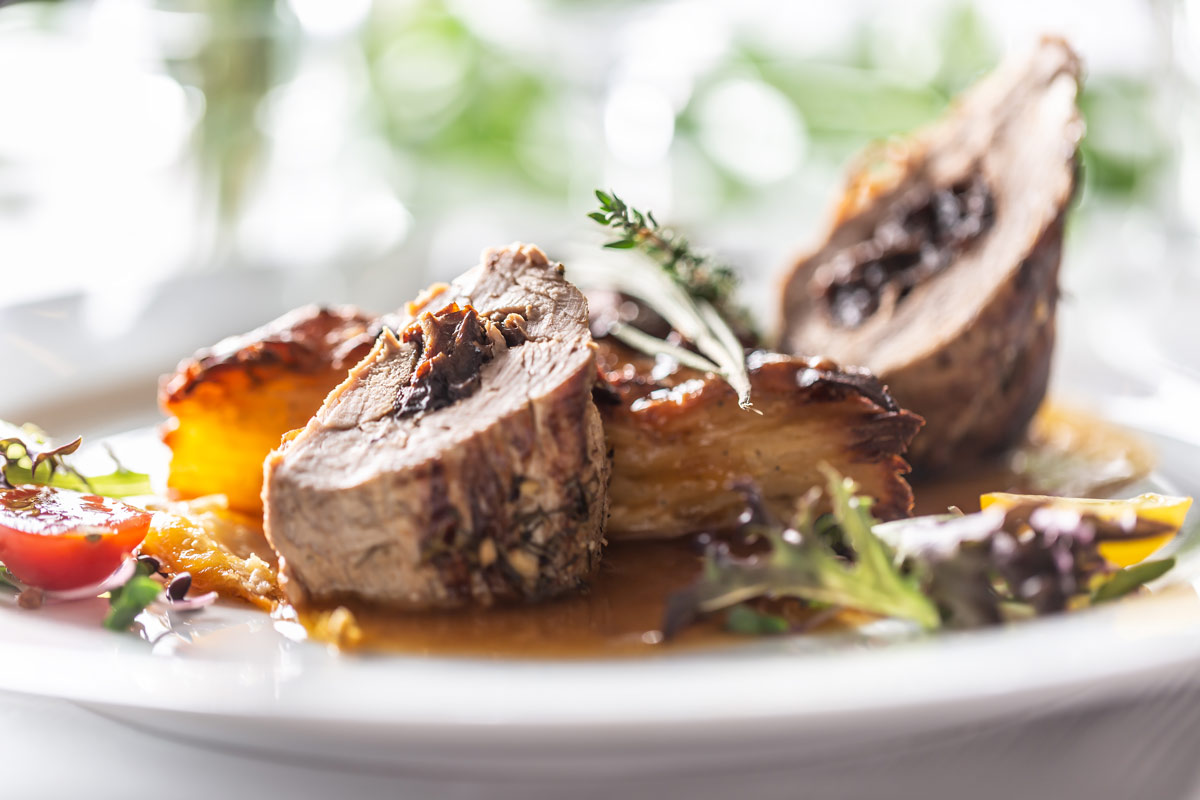 Stuffed Pork Tenderloin Its impressive appearance belies how easy this dish is to make, whether for a weeknight meal or guests. Small potatoes roasted in olive oil and our citrus salad make appetizing accompaniments, as does piquillo pepper sauce. Ingredients 1 pork tenderloin, about 1 1/2 pounds Extra virgin olive oil Coarse salt (kosher or sea) and freshly… view recipe
Stuffed Pork Tenderloin Its impressive appearance belies how easy this dish is to make, whether for a weeknight meal or guests. Small potatoes roasted in olive oil and our citrus salad make appetizing accompaniments, as does piquillo pepper sauce. Ingredients 1 pork tenderloin, about 1 1/2 pounds Extra virgin olive oil Coarse salt (kosher or sea) and freshly… view recipe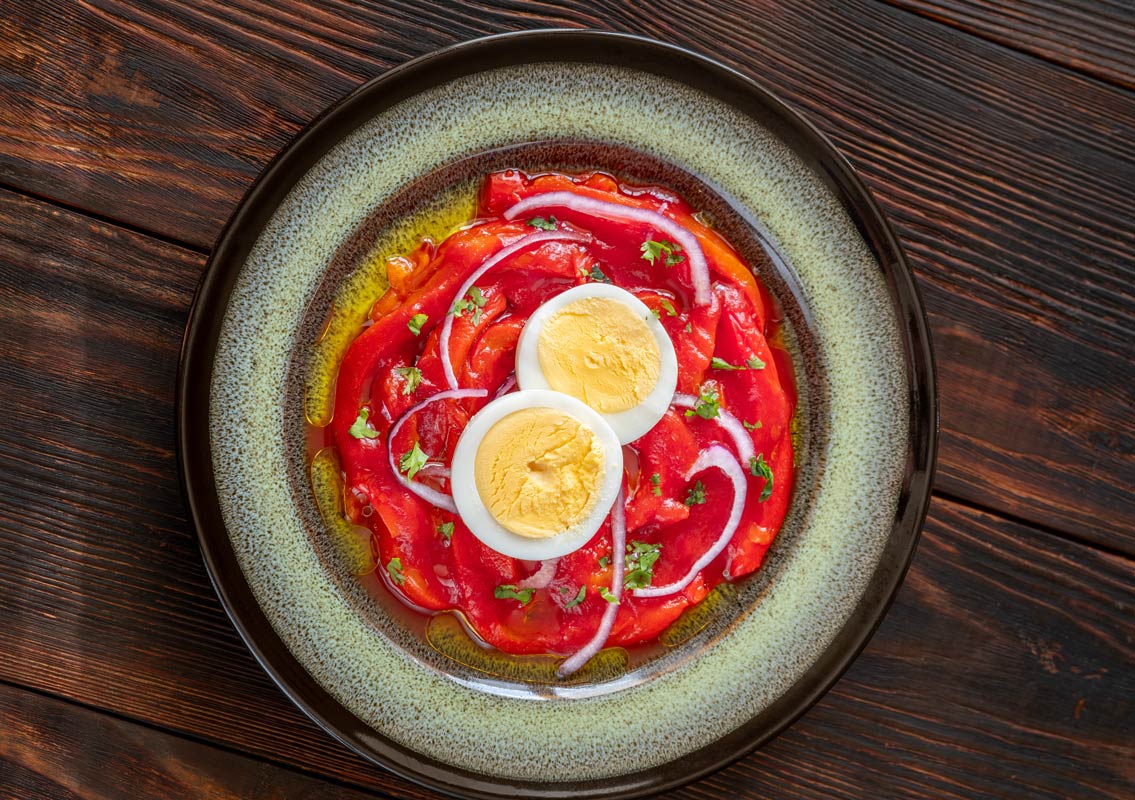 Zorongollo This colorful salad, popular in Cáceres in western Spain, makes a great starter, light lunch, or midnight snack. Do not confuse it with zarangollo, a dish from Murcia that features stewed zucchini and scrambled eggs. Ingredients 3 red, yellow, or orange bell peppers, or a mix 4 Roma tomatoes 1 small head of garlic, the… view recipe
Zorongollo This colorful salad, popular in Cáceres in western Spain, makes a great starter, light lunch, or midnight snack. Do not confuse it with zarangollo, a dish from Murcia that features stewed zucchini and scrambled eggs. Ingredients 3 red, yellow, or orange bell peppers, or a mix 4 Roma tomatoes 1 small head of garlic, the… view recipe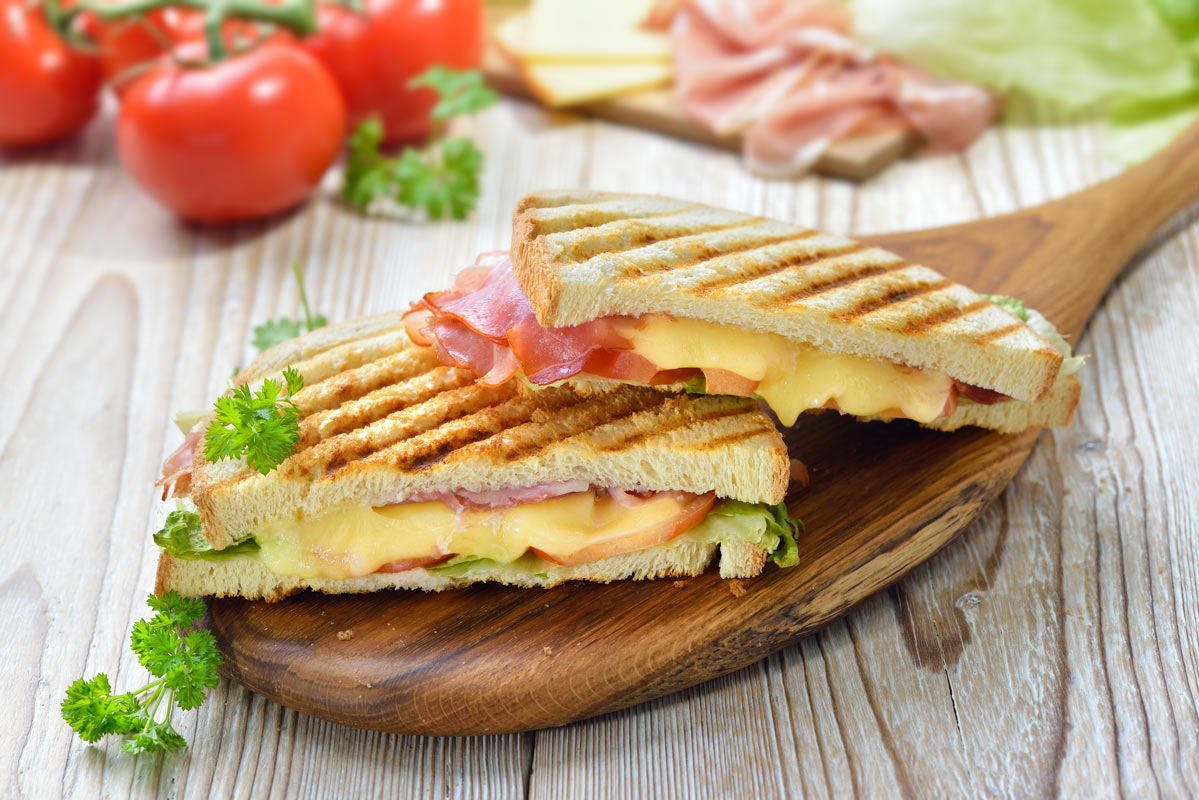 Bikini Sandwiches Back in the 1950s, the Barcelona nightclub La Sala Bikini started serving croque monsieur, the French grilled ham and cheese sandwich. Because the Spanish dictator Francisco Franco didn’t allow French (or English) words in the lexicon, it was simply called the home sandwich, but patrons soon referred to it as the Bikini. Delicious when made… view recipe
Bikini Sandwiches Back in the 1950s, the Barcelona nightclub La Sala Bikini started serving croque monsieur, the French grilled ham and cheese sandwich. Because the Spanish dictator Francisco Franco didn’t allow French (or English) words in the lexicon, it was simply called the home sandwich, but patrons soon referred to it as the Bikini. Delicious when made… view recipe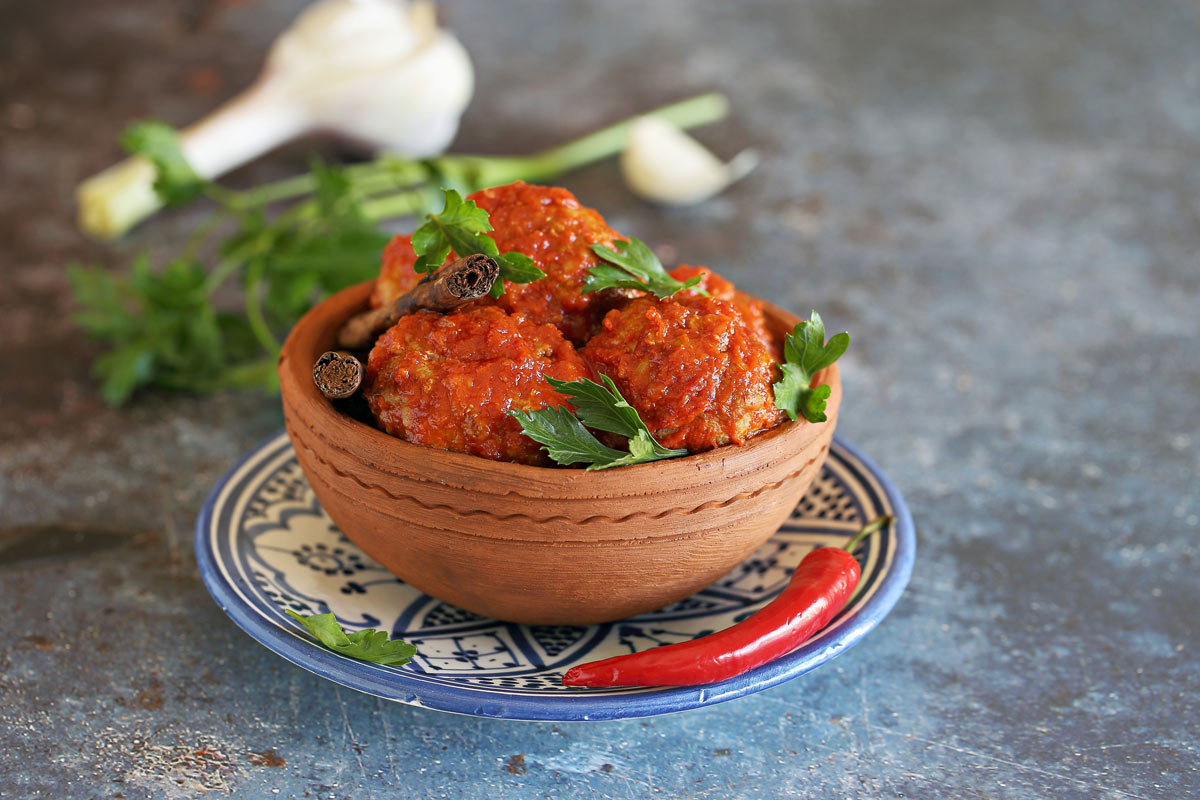 Lamb Merguez Meatballs Highly spiced lamb merguez is traditionally a dish from North Africa, just across the Mediterranean from Spain. To add a Spanish influence, orange zest is included with the other aromatics, and the finished meatballs are drizzled with a citrus sauce. Ingredients For the spice mix: 2 teaspoons cumin seeds 2 teaspoons fennel seeds 2 teaspoons coriander seeds 4 teaspoons pimentón 1 teaspoon… view recipe
Lamb Merguez Meatballs Highly spiced lamb merguez is traditionally a dish from North Africa, just across the Mediterranean from Spain. To add a Spanish influence, orange zest is included with the other aromatics, and the finished meatballs are drizzled with a citrus sauce. Ingredients For the spice mix: 2 teaspoons cumin seeds 2 teaspoons fennel seeds 2 teaspoons coriander seeds 4 teaspoons pimentón 1 teaspoon… view recipe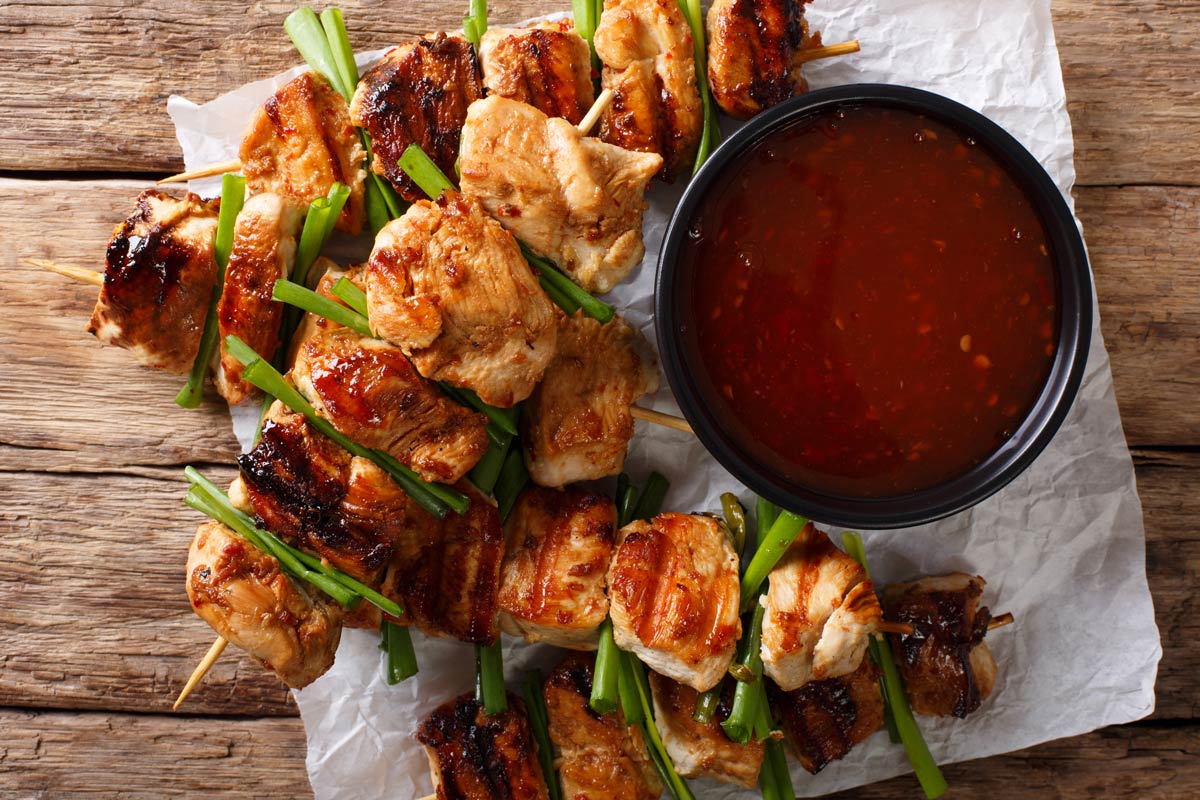 Chicken Kebabs with Hot Honey (Pinxtos/Pinchos) Is it just us, or does food served on skewers taste better? We have made these kebabs with chicken thighs (our favorite), breasts, and tenders. You could even use boneless pork if that’s what you have on hand. Serve with crusty bread and sliced tomatoes or a green salad dressed with extra virgin olive oil,… view recipe
Chicken Kebabs with Hot Honey (Pinxtos/Pinchos) Is it just us, or does food served on skewers taste better? We have made these kebabs with chicken thighs (our favorite), breasts, and tenders. You could even use boneless pork if that’s what you have on hand. Serve with crusty bread and sliced tomatoes or a green salad dressed with extra virgin olive oil,… view recipe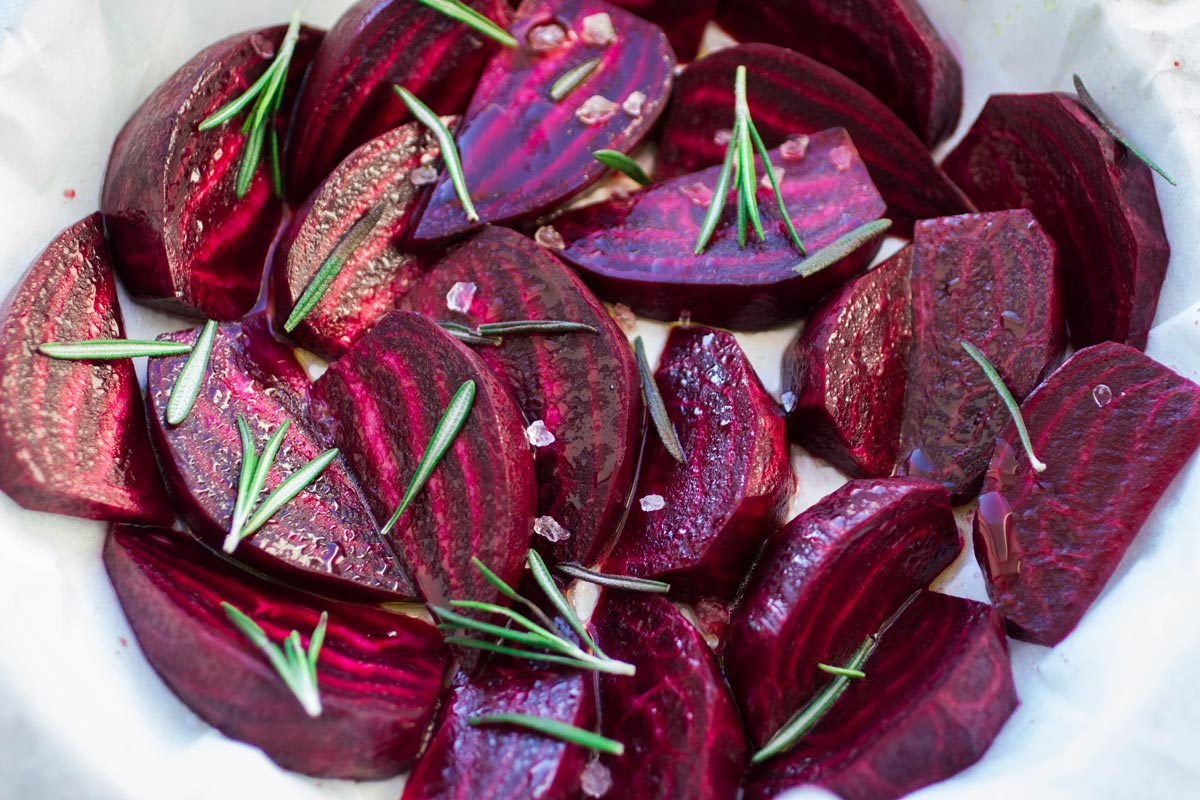 Ensalada de Remolacha Beet salad is a centuries-old Spanish favorite. Recent versions cut the prep time by using canned beets, but roasting fresh ones brings out their sweetness. Serve it warm or chilled. To turn it from a side dish into a main course, serve on a bed of greens, such as arugula, and top with hazelnuts and… view recipe
Ensalada de Remolacha Beet salad is a centuries-old Spanish favorite. Recent versions cut the prep time by using canned beets, but roasting fresh ones brings out their sweetness. Serve it warm or chilled. To turn it from a side dish into a main course, serve on a bed of greens, such as arugula, and top with hazelnuts and… view recipe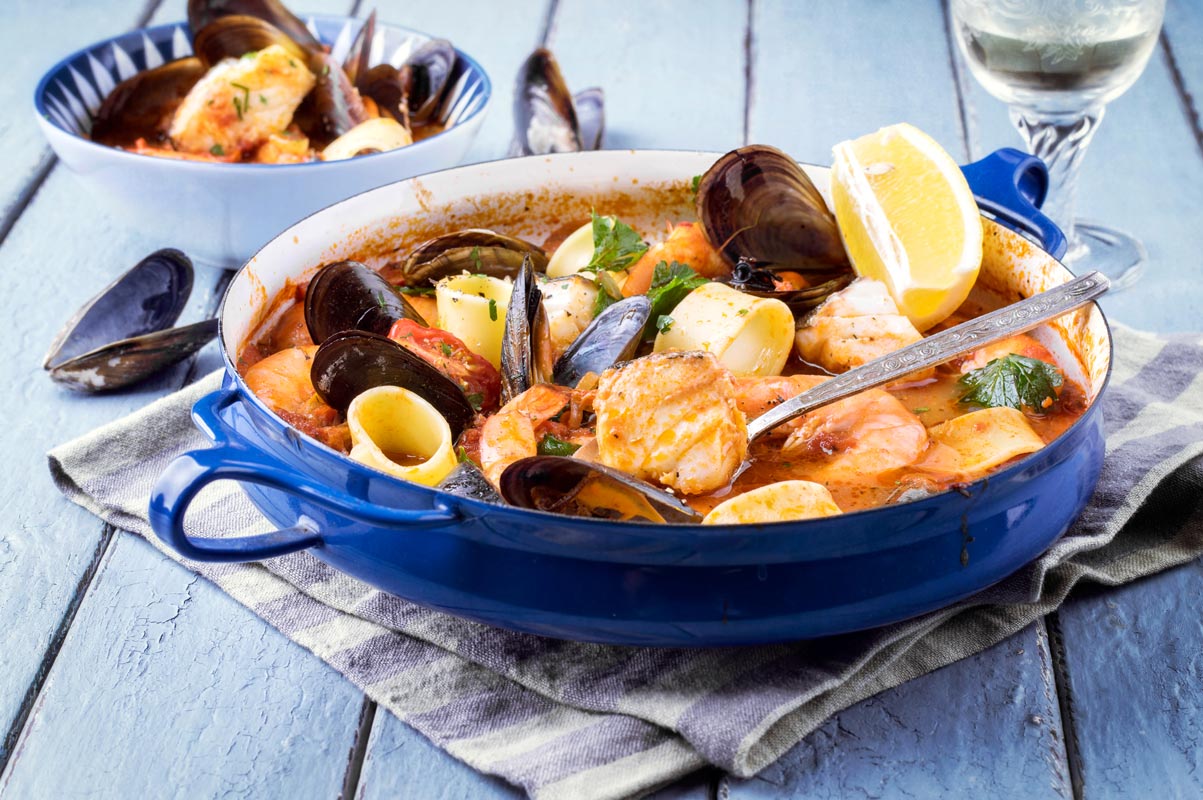 Zarzuela de Mariscos y Pescado One of the most popular shellfish (mariscos) and fish (pescado) dishes in Spain, zarzuela is actually the name of an eclectic type of musical theater—think variety show. The dish, believed to have originated in Barcelona more than a century ago, bears the name because it’s best made with a variety of seafood. Cook up your… view recipe
Zarzuela de Mariscos y Pescado One of the most popular shellfish (mariscos) and fish (pescado) dishes in Spain, zarzuela is actually the name of an eclectic type of musical theater—think variety show. The dish, believed to have originated in Barcelona more than a century ago, bears the name because it’s best made with a variety of seafood. Cook up your… view recipe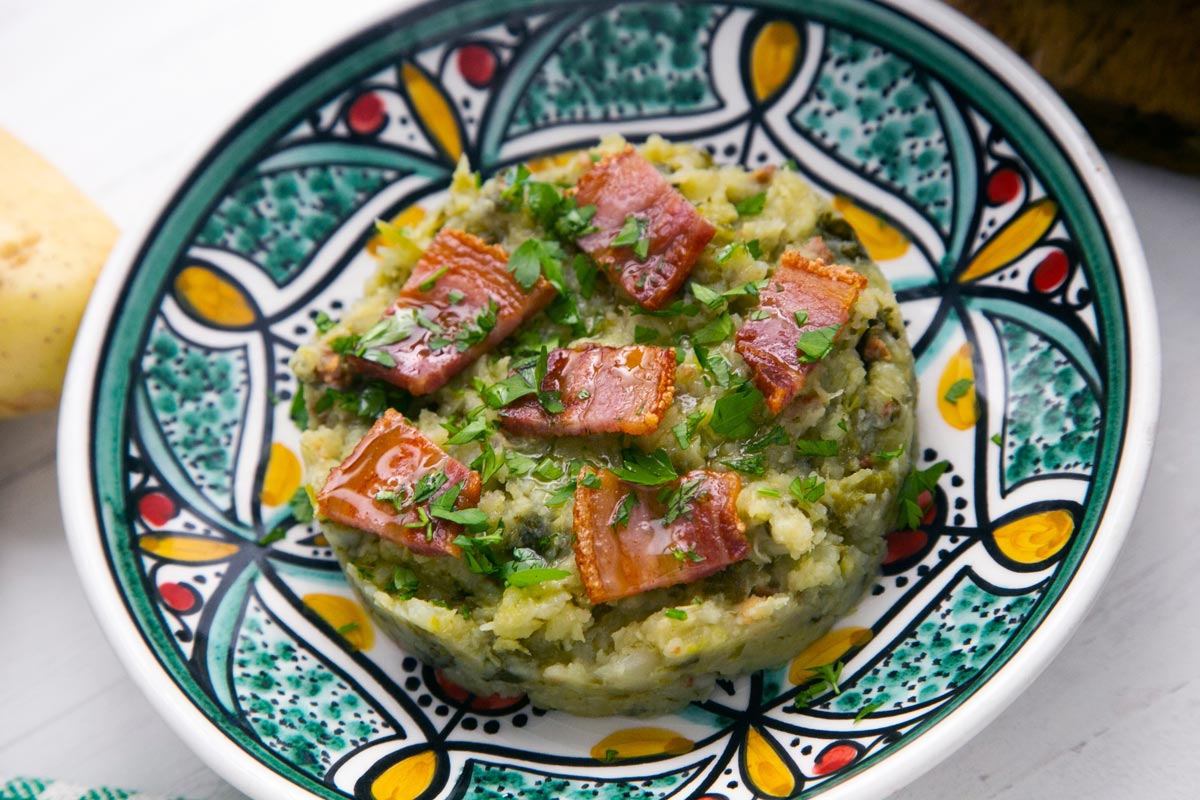 Trinxat de Col (Potato and Cabbage Cakes with Bacon) Think of this as a kind of Spanish potato pancake—comfort food at its best, with potatoes, cabbage (or kale), and bacon. Traditionally, it’s served as a frying pan–sized cake. But individual servings are easier to manage and look beautiful on a plate. Ingredients Coarse salt (kosher or sea) 4 medium-size russet potatoes (each about 10… view recipe
Trinxat de Col (Potato and Cabbage Cakes with Bacon) Think of this as a kind of Spanish potato pancake—comfort food at its best, with potatoes, cabbage (or kale), and bacon. Traditionally, it’s served as a frying pan–sized cake. But individual servings are easier to manage and look beautiful on a plate. Ingredients Coarse salt (kosher or sea) 4 medium-size russet potatoes (each about 10… view recipe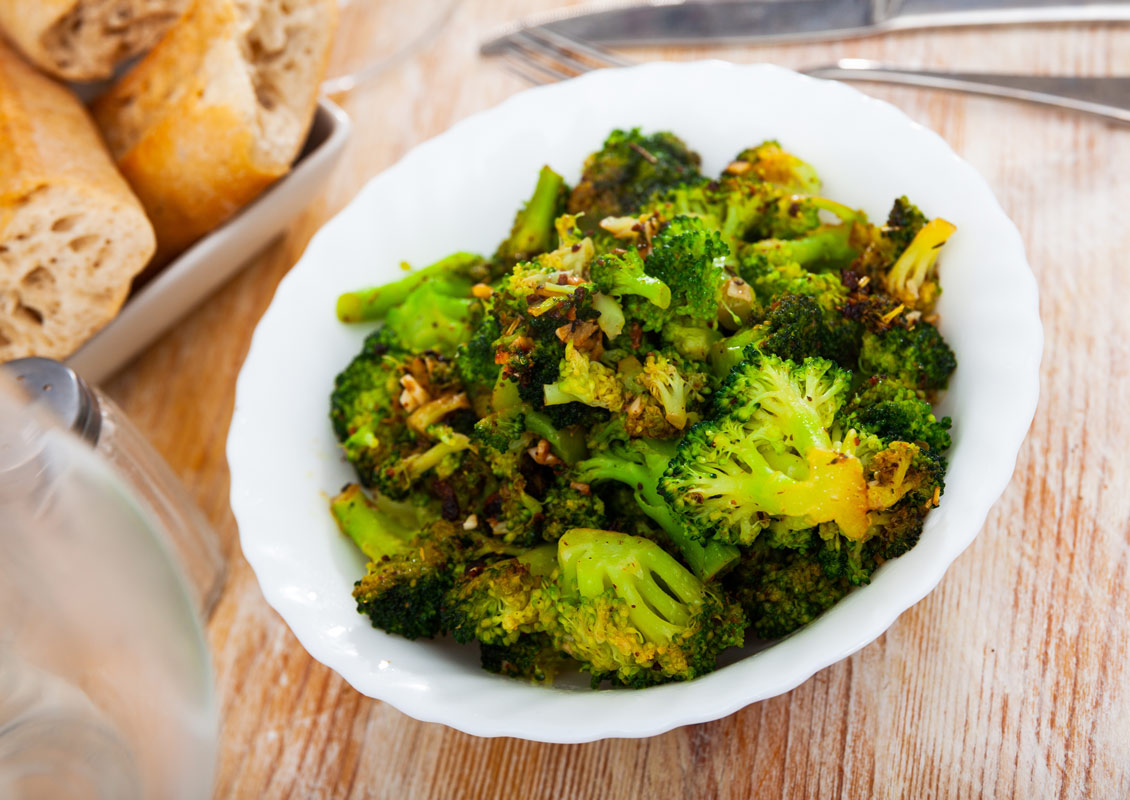 Oven Roasted Broccoli with Serrano Crisps Many supermarkets now sell broccoli crowns—the top few inches of the bunch. While I don’t mind trimming off and peeling the lower part of the stalks (they’re great in stir-fries), the convenience of the crowns is appealing. A dusting of crisp serrano ham bits takes this easy side dish over the top. Ingredients 1 1/2… view recipe
Oven Roasted Broccoli with Serrano Crisps Many supermarkets now sell broccoli crowns—the top few inches of the bunch. While I don’t mind trimming off and peeling the lower part of the stalks (they’re great in stir-fries), the convenience of the crowns is appealing. A dusting of crisp serrano ham bits takes this easy side dish over the top. Ingredients 1 1/2… view recipe Almond Orange Cake This is a very moist, gluten-free single-layer cake topped with sautéed orange slices. A mix of oranges, such as blood orange, mandarin, and Cara Cara, slightly overlapping atop the cake, creates a beautiful presentation. Tip: Zest the oranges you’ll sauté for the topping and use the zest in the batter. Ingredients For the batter: 2 cups almond… view recipe
Almond Orange Cake This is a very moist, gluten-free single-layer cake topped with sautéed orange slices. A mix of oranges, such as blood orange, mandarin, and Cara Cara, slightly overlapping atop the cake, creates a beautiful presentation. Tip: Zest the oranges you’ll sauté for the topping and use the zest in the batter. Ingredients For the batter: 2 cups almond… view recipe
